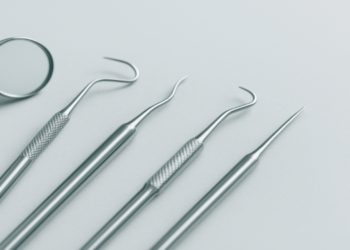Introduction:
Most of us associate dental problems with obvious signs—sharp toothaches, visible cavities, or swollen gums. But your mouth often sends out more subtle signals long before pain or visible damage occurs. Teeth are remarkably communicative, and by paying closer attention, you can catch early warnings that something may be going wrong. These signs are easy to miss, especially if you only go to the dentist when something feels urgent.
Understanding what your teeth are trying to tell you can help you avoid serious issues down the road. Whether it’s unusual sensitivity, slight changes in colour, or discomfort while chewing, your teeth may be sounding the alarm in ways that do not feel like emergencies—yet. This article explores the less obvious ways your oral health might be at risk and why routine attention plays a vital role in catching these concerns early.
Tooth sensitivity can point to enamel erosion or gum recession:
Mild discomfort when drinking something hot or cold is often dismissed as normal. However, recurring sensitivity can be a sign that your tooth enamel is wearing thin or that your gums are starting to recede. Both issues expose the more sensitive parts of your teeth, like the dentin or root, which are not protected the same way enamel is.
If left unaddressed, sensitivity can worsen and lead to decay, cracks, or even nerve exposure. Early intervention with sensitivity toothpaste, enamel-strengthening products, or gum care strategies can make a big difference. Recognising this symptom as a red flag rather than a minor annoyance could save you from more extensive procedures down the line.
Bad breath that won’t go away might signal hidden infection:
Morning breath is normal, and so is the occasional unpleasant odour after eating strong-smelling foods. But if bad breath lingers despite brushing and flossing, it may indicate a deeper issue. Chronic bad breath, or halitosis, is often caused by bacteria trapped in the gums, on the tongue, or in decaying teeth.
In some cases, persistent bad breath can point to gum disease, dry mouth, or even an infected tooth. These conditions create environments where bacteria thrive. Masking the smell with mints or mouthwash only treats the symptom—not the source. A dental professional can help identify the cause and provide a targeted solution before the problem escalates.
Teeth that feel slightly loose may be showing signs of bone loss:
Your teeth are supposed to feel solid and stable in your mouth. If one or more teeth suddenly feel a little loose—or if you notice slight movement when biting—it could be a sign of gum disease or bone deterioration around the roots. This condition does not usually come with pain at first, which is why it’s often ignored.
Ignoring this symptom can lead to tooth loss, especially if the supporting bone is weakening. Early-stage periodontal disease may not be obvious, but dental exams with X-rays can detect changes in bone density and gum health. Services like General Dentistry help monitor these subtle changes, providing preventive care and timely treatment that preserve natural teeth for the long term.
Changes in bite or jaw alignment could indicate hidden dental stress:
Has your bite felt different lately? Do your teeth no longer line up the way they used to? Subtle changes in your bite or jaw position could be signs of bruxism (teeth grinding), TMJ disorders, or even shifting teeth due to gum or bone issues. Many people live with minor misalignments and don’t realise it’s a dental red flag.
These shifts can place strain on your jaw, cause headaches, and even wear down your teeth unevenly. A trained dentist can spot these changes before they cause permanent damage. Treatment options range from night guards and bite adjustments to orthodontic interventions that prevent bigger issues in the future.
Tiny cracks or chips may be early signs of tooth fatigue:
Hairline cracks or small chips in your teeth might seem cosmetic at first, especially if there’s no immediate pain. But these minor fractures can be signs of tooth fatigue from excessive pressure, grinding, or weakened enamel. Over time, they can lead to full breaks, infections, or decay if bacteria enter the inner structure of the tooth.
Spotting a chip early gives you more options, such as bonding or protective sealing, rather than waiting until a full crown or root canal is needed. If you notice jagged edges, slight roughness, or visible lines in your enamel, it’s time to mention it during your next dental check-up.
Soreness when chewing can signal more than just sensitivity:
If you feel discomfort when biting down or chewing food, it could be easy to dismiss it as eating something too hard. But when this soreness becomes frequent or persistent, it may point to a cracked tooth, cavity, or even an infected root. These issues often start with mild pain that gets worse over time.
Another possible cause of chewing soreness is uneven bite pressure caused by misaligned teeth. This puts stress on certain teeth more than others, leading to wear and tear. Ignoring this sign can lead to abscesses, mobility, or further breakdown of the tooth. A dentist can identify the root cause and suggest a solution before it gets worse.
Gum colour changes or swelling are often the first warning signs:
Healthy gums should be a firm, pink colour—not red, puffy, or bleeding easily. Swollen or discoloured gums are often early signs of gingivitis or the beginning stages of periodontal disease. These conditions usually don’t hurt at first, which makes it easier to ignore the changes as unimportant.
Monitoring your gum health is one of the simplest ways to catch problems early. If your gums bleed when brushing or feel tender when touched, it’s time to take it seriously. Treatments like deep cleaning, scaling, and improved home care can reverse early gum disease if caught in time. Left untreated, the damage becomes harder to fix and may lead to tooth loss. When gum disease progresses without treatment, it can lead to complications that require long-term health management, which is where programs like the Arizona Long Term Care System can provide essential support for eligible individuals.
Teeth that look slightly darker could be warning of internal issues:
Teeth naturally vary in colour, but when a single tooth begins to darken or turn grey, it may be a sign of trauma, infection, or decay inside the tooth. This change often occurs slowly, and many people don’t notice it right away. Unlike surface stains, internal darkening cannot be brushed away or corrected with whitening.
“A tooth that’s turning dark may have an infected or dying nerve, especially if there was a past injury to the mouth. In some cases, it could mean a hidden cavity is growing beneath the enamel. Treatment may involve a root canal or restoration, but catching it early can help prevent extraction or more extensive damage.” Wood World
How oral discomfort can reflect emotional stress and mental strain:
“While most people think of dental issues as purely physical, the connection between emotional stress and oral health is stronger than it appears. Clenching your jaw, grinding your teeth at night, or experiencing frequent mouth soreness can all be responses to mental strain or unresolved anxiety. These patterns often develop unconsciously during stressful periods and can go unnoticed until they begin to cause real damage.
Stress-related habits like teeth grinding (bruxism) not only wear down enamel but can also lead to chronic jaw pain, headaches, and sleep disturbances. Recognising that your mouth may be reacting to what your mind is going through is an important step in holistic care. Addressing both the psychological and dental factors together offers a more sustainable approach to healing and prevention.”
Conclusion:
Your teeth are not just tools for chewing—they are messengers. They reveal more about your health than you might realise, often through quiet, gradual changes that are easy to overlook. From unusual sensitivity and slight movement to subtle colour changes or discomfort while eating, these signs are your mouth’s way of asking for attention.
The best way to respond is not to wait for the pain to begin but to be proactive. Routine visits allow trained professionals to catch subtle problems early and help you understand what your mouth is telling you. By listening closely and acting quickly, you can avoid bigger issues, save on treatment costs, and preserve the health and strength of your smile for years to come.












































































